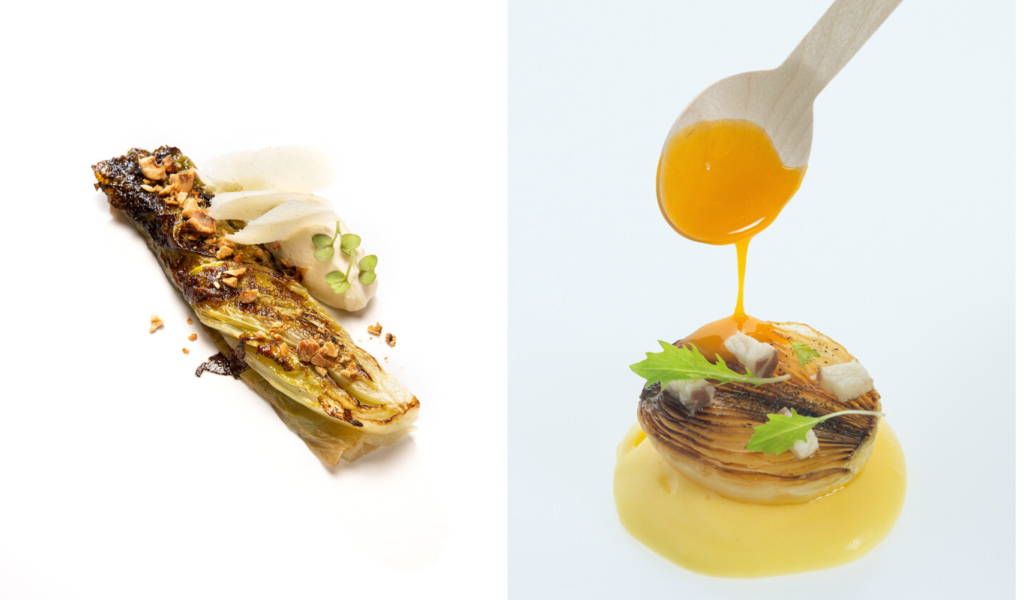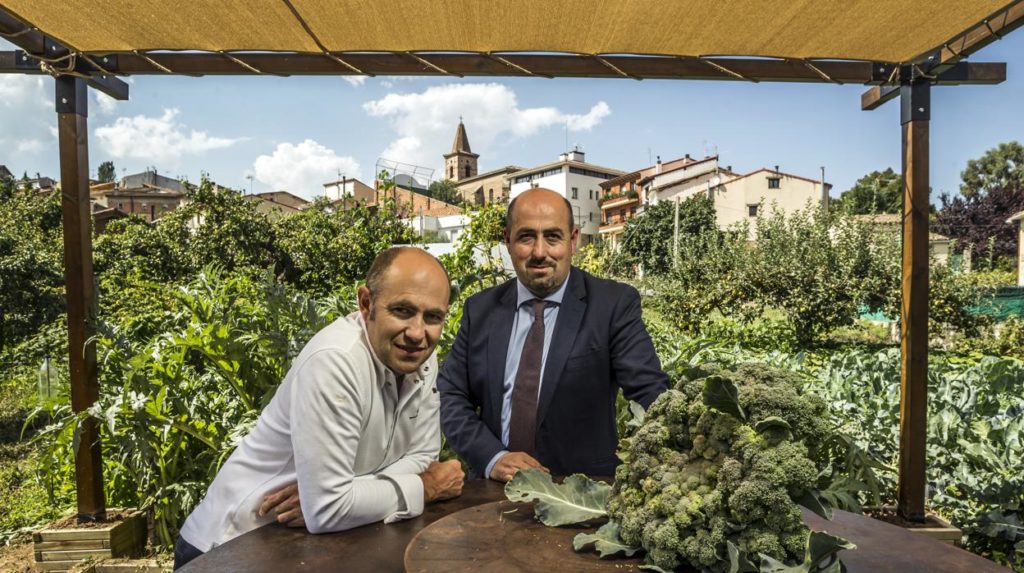Cultivation for private consumption is a popular weekend pastime. Here, almost every family owns a few hectares of vineyards and plots of land where they grow grapes, almonds, peaches, pears, apples, plums, olives, peppers, beans, lettuce, asparagus, potatoes and other fruits and vegetables. People hunt, fish and pick wild mushrooms. Most families living in large cities and towns have their roots in small villages around the province, where growing foodstuffs and raising farm animals was at one time how families were able to eat.
In addition to growing, preserving what we grow is an important activity. We make chorizo and salchichón (types of cured sausage) from local breeds of pork, we roast red ‘piquillo’ peppers and preserve asparagus and other vegetables for consumption outside the growing season, just as our ancestors did.
When my family moved to Logroño from Madrid, we experienced this tradition personally. We were surprised most Sunday afternoons to see families unloading crates of fruits and vegetables from their car after a weekend at their house in a small village. Receiving these goods from friends is a powerful symbol of friendship.
How do locals who don’t have a house in a village participate in growing produce? They apply for a plot in an urban garden, an activity promoted by local governments. Urban gardens are a win-win. Participants enjoy working the soil and taking home what they grow on their plot. Other produce is given away to the needy.
The European Union has certified the origin, production methods and control procedures of many of these products. Of course, the most internationally recognized of these is Rioja wine, granted Protected Designation of Origin (PDO) status from the E.U. and additionally one of Spain’s two ‘Qualified Designation of Origin’ for wine.
Other local and regional products with PDO status are La Rioja Olive Oil, Pears from Rincón de Soto, Walnuts ‘El Noguedal’, and Red Beans from Anguiano (check the complete list at La Rioja Capital web).

Typical Riojan vegetable products at the Juan Carlos Ferrando Restaurant, winner of the Best Of Wine Tourism 2024 award.
The E.U. also recognizes other products with the designation IGP (Indication of Geographic Protection), showing that the quality or reputation of your food is linked to the place where it is produced, processed or prepared, Among the best-known products protected by this designation are Pimiento Riojano (Riojan peppers) and Cauliflower from Calahorra in La Rioja, Gernika peppers and Euskal Okela (Basque veal).
The Eusko Label is a quality designation created by the Basque Country in addition to the region’s PDOs and IGPs. Among them are Bonito del Norte (tuna from the Bay of Biscay), Sal de Añana (Añana salt from underground salt springs), antxoas (anchovies from the Bay of Biscay caught using traditional methods) potatoes from Álava, peppers from Gernika, and spicy peppers from Ibarra.

Añana salt produced in situ for ‘Michelin starred’ restaurants and lamb of the Chamarito Riojan variety. Photo: Tom Perry.
Other products, although their producers have not applied for official recognition but are well known in Spain are Cogollos de Tudela (baby lettuce from Tudela, Morcilla de La Rioja (blood sausage from La Rioja), Cebolleta de Recajo (spring onions from Recajo), and Cordero Chamarito (a race of sheep native to the mountains in La Rioja).
Given this tradition of producing and consuming local products, restaurants here promote them enthusiastically and creatively in their seasonal offerings.
The Venta Moncalvillo in Daroca de Rioja, with several Best Of Wine Tourism awards, two Michelin stars, one Michelin green star and two ‘Suns’ in Spain’s Repsol Guide proclaims the following on its website:
Daroca de Rioja is a hamlet with 30 inhabitants, only 15 minutes from Logroño. It is located on the northern slope of the Moncalvillo mountains, surrounded by nature from which the Venta Moncalvillo stocks its pantry.
Daroca is a privileged enclave because of the wealth of vegetation (from its fertile soil that provides the raw materials for spring and summer dishes, to the forest that provides a wide range of wild mushrooms, the basis for our autumn dishes. Local fauna, from which we make our winter game dishes, lives In the surrounding mountains.

The Echapresto brothers grow the delicious products they offer in their restaurant. Photo: Venta Moncalvillo.
Echaurren, with four restaurants in the village of Ezcaray, including El Portal, the first Riojan restaurant to be awarded two Michelin stars and with Three ‘Suns’ from Spain’s Repsol Guide, offers a wide range of well-known dishes made with Riojan raw materials such as blood sausage from Ezcaray, white beans with quail, red beans Riojan style with sausage and spicy peppers, milk lamb trotters and warm toast with Cameros cheese.
Producing and consuming excellent quality local and regional foodstuffs, both at home and when we eat out is in our DNA. This explains why we are arguably Spain’s premier gastronomic destination.
Text by Tom Perry, Inside Rioja
Learn more about Bilbao-Rioja Great Wine Capitals